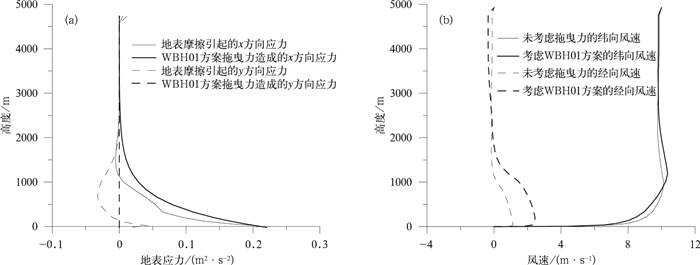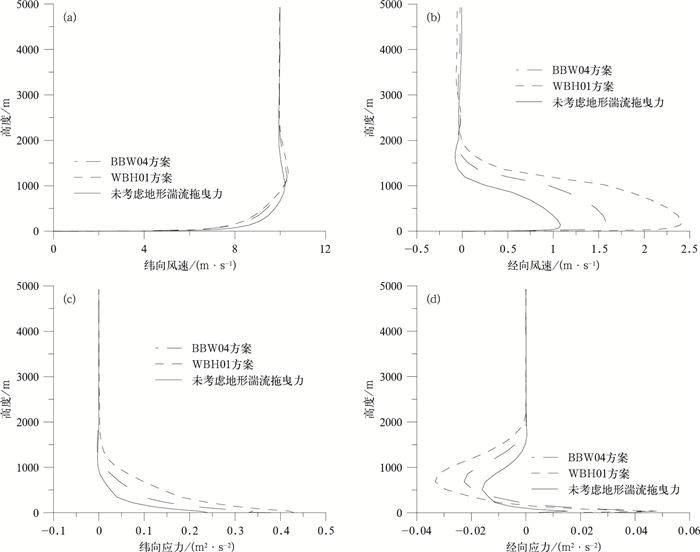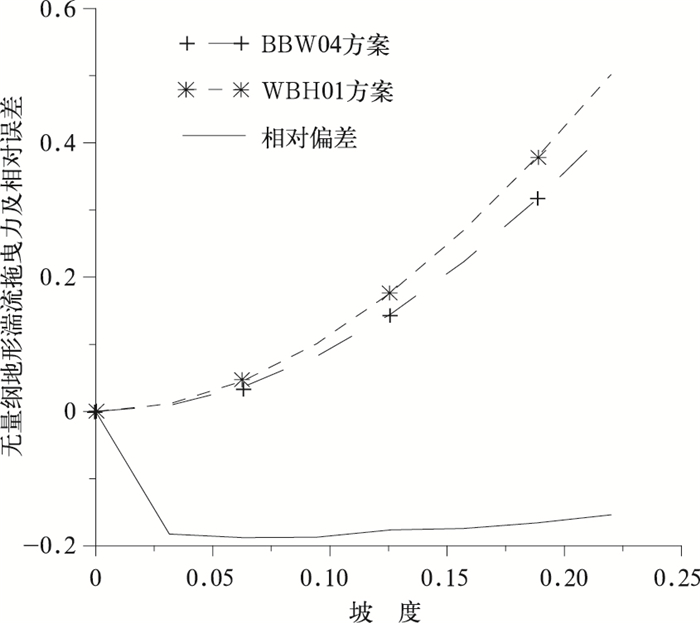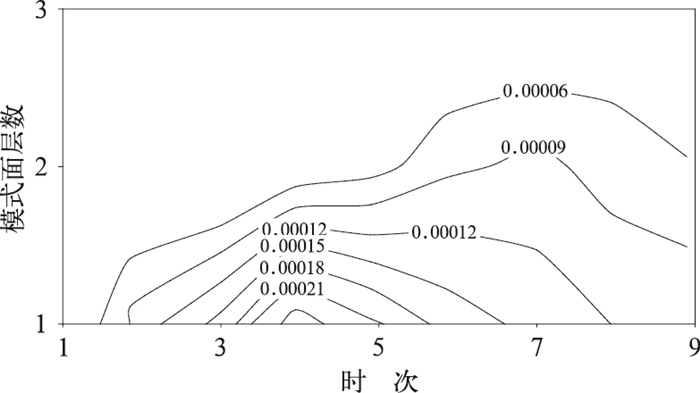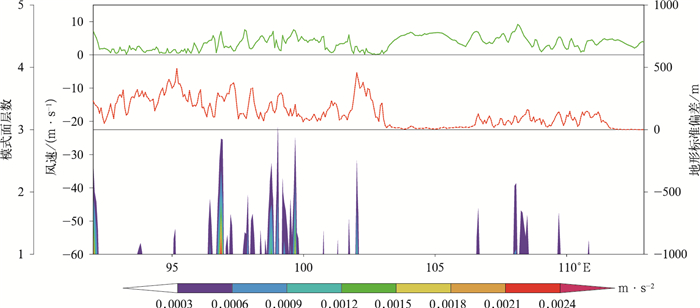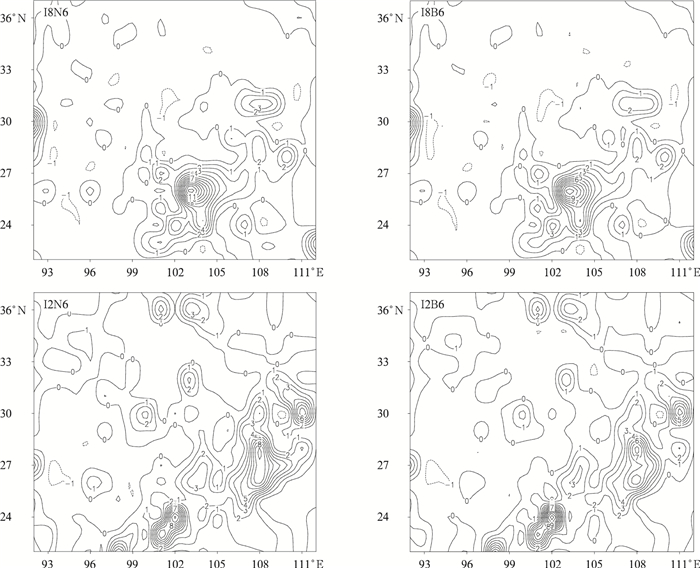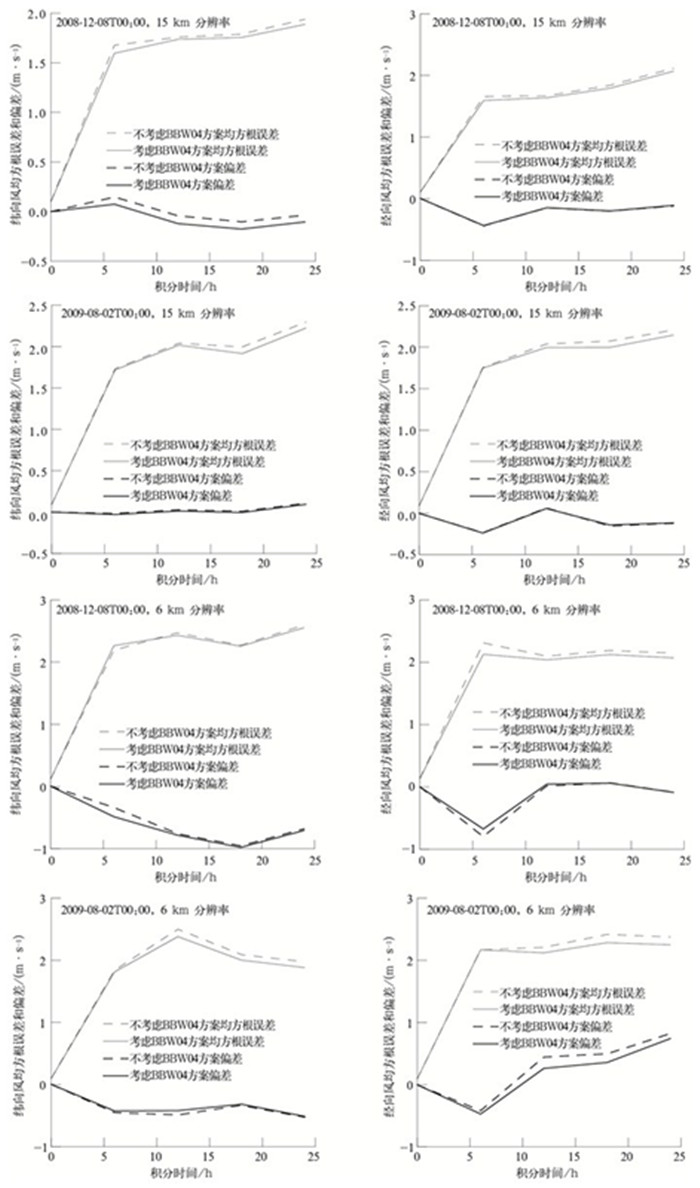Parameterization of Turbulent Orographic Form Drag and Implementation in GRAPES
-
摘要: 分辨率的限制使得不能被模式识别的地形称为次网格尺度地形,次网格尺度地形在热力和动力方面对实际大气有着不可忽略的作用,其效应只能通过参数化的形式回馈给模式。分辨率的提高使得与较小尺度地形相联系的地形湍流拖曳力凸显其重要性。数值模式中地形湍流拖曳力的参数化对完善模式物理过程和改善模式近地层预报效果具有积极意义,其方法包括有效粗糙度法和直接参数化法,而GRAPES模式中并未以任何方法考虑次网格尺度地形的影响。该文通过单柱模式比较了有效粗糙度法和直接参数化法的优劣, 发现后者在有些方面优于前者。最后,将应用于实际的一个直接参数化方案接入GRAPES中尺度模式中,进行个例模拟,并与NCEP再分析资料进行对比,结果表明:考虑地形湍流拖曳力方案对模式预报具有改进作用,尤其对局地低层风场具有积极影响。
-
关键词:
- 次网格尺度地形湍流拖曳力;
- 参数化;
- GRAPES模式
Abstract: Due to the limited model resolution, scales of topographies below the model resolution are called sub-grid scale orography. Sub-grid scale orography plays important roles on the atmosphere from the thermal and dynamic aspects, and these effects are fed back to the model atmosphere through parameterization.Generally, the dynamic effects of sub-grid scale orography includes: Sub-grid orographic turbulent form drag caused by turbulent flow over hills; sub grid-scale form drag of orographic flow blocking, separating and lee vortex; buoyancy waves drag caused by breakdown of gravity-waves that excited by flow over mountains and transmitting upward in the upper atmosphere. With resolution raised, turbulent form drag becomes more important which is associated with small-scale orography. Given these facts, the characteristics and effects of the sub-grid orographic turbulent form drag and its parameterization are studied.Usually, effects of the turbulent form drag due to sub-grid scale orography in numerical models are simply considered as enhancing surface roughness, known as the effective roughness method. In recent years, according to asymptotic theory and numerical simulations, a new scheme of sub-grid orographic turbulent form drag is developed. As an independent physical process, the new scheme is of three-dimension features in the model, while the effective roughness method is only considered being on the surface level.It is significant to consider turbulent form drag in NWP model for completing physical processes of model and improving the model prediction of the surface layer. A single-column model is used to simulate the characteristics of turbulent form drag, comparing the advantages and disadvantages between the effective roughness method and direct parameterizing method. Two direct parameterization schemes are also compared, one is developed and applied in NWP model recently, and the other is based on ideal terrain. Finally, the form drag scheme that developed and applied in NWP model is implemented into the GRAPES regional model. Case studies are conducted to investigate the possible influences of form drag on the forecast of near surface wind fields and other variables. -
图 1 有效粗糙度法和直接参数化法 (应用WBH01方案) 对低层气流的作用
(a) 有效粗糙度随坡度和地面粗糙度的变化,(b) 地表总应力 (被摩擦速度的平方标准化) 随坡度的变化,(c) 模式第1层 (5.5 m) 纬向风随坡度变化,(d) 模式第1层 (5.5 m) 经向风随坡度变化
Fig. 1 The influence of effective roughness method and directed method (using WBH01 scheme) on the lower layer
(a) the effective roughness changes with local roughness and slope, (b) the total surface stress (normalized by friction velocity square), (c) the zonal velocity changes of the 1st model level (5.5 m) with slope, (d) the meridional velocity changes of the 1st model level (5.5 m) with slope
表 1 个例模拟简明表
Table 1 Cases concise table
试验简称 描述 区域 起报时间 O8B15 外围考虑BBW04方案,0.15°分辨率 15°~65°N,70°~145°E 2008-12-08T00:00 O8N15 外围不考虑拖曳力方案,0.15°分辨率 15°~65°N,70°~145°E 2008-12-08T00:00 O2B15 外围考虑BBW04方案,0.15°分辨率 15°~65°N,70°~145°E 2009-08-02T00:00 O2N15 外围不考虑拖曳力方案,0.15°分辨率 15°~65°N,70°~145°E 2009-08-02T00:00 I8B6 嵌套,考虑BBW04方案,0.06°分辨率 20°~38°N,92°~113°E 2008-12-08T00:00 I8N6 嵌套,不考虑拖曳力方案,0.06°分辨率 20°~38°N,92°~113°E 2008-12-08T00:00 I2B6 嵌套,考虑BBW04方案,0.06°分辨率 20°~38°N,92°~113°E 2009-08-02T00:00 I2N6 嵌套,不考虑拖曳力方案,0.06°分辨率 20°~38°N,92°~113°E 2009-08-02T00:00 -
[1] 叶笃正, 顾震潮.西藏高原对于东亚大气环流及中国天气的影响.科学通报, 1955, 6: 28-33. http://www.cnki.com.cn/Article/CJFDTOTAL-KXTB195506006.htm [2] 叶笃正.西藏高原对于大气环流影响的季节变化.气象学报, 1952, 23(1):33-47. http://www.cnki.com.cn/Article/CJFDTOTAL-QXXB1952Z1001.htm [3] 叶笃正.小地形对于气流的影响.气象学报, 1956, 27(3):243-265. doi: 10.11676/qxxb1956.018 [4] 钱永甫, 颜宏, 王谦谦, 等.行星大气中地形效应的数值模拟.北京:科学出版社, 1988: 217. [5] 卢敬华, 陈刚毅.中小地形对局地天气气候的影响.成都气象学院学报, 1989, 8: 1-9. http://www.cnki.com.cn/Article/CJFDTOTAL-CDQX198901000.htm [6] Davies L A, Brown A R.Assessment of which scales of orography can be credibly resolved in a numerical model. Q J R Meteorol Soc, 2001, 42: 828-841. doi: 10.1002/qj.49712757405/pdf [7] Jackson P S, Hunt C R. Turbulent wind flow over a low hill. Quart J Roy Met Soc, 1975, 101: 929-955. doi: 10.1002/(ISSN)1477-870X [8] Sykes R I. An asymptotic theory of incompressible turbulent flow over a small hump. J Fuid Mech, 1980, 101: 647-670. doi: 10.1017/S002211208000184X [9] Hunt J C R, Leibovich S, Richards K J. Turbulent shear flows over low hills. Q J R Meteorol Soc, 1988 114: 1435-1471. doi: 10.1002/(ISSN)1477-870X [10] Belcher S E, Newley T, Hunt J. The drag on an undulating surface induced by the flow of a turbulent boundary layer. J Fluid Mech, 1993, 249: 557-596. doi: 10.1017/S0022112093001296 [11] Wood N, Mason P. The pressure force induced by neutral, turbulent flow over hills. Quart J Roy Met Soc, 1993, 119: 1233-1267. doi: 10.1002/(ISSN)1477-870X [12] Belcher S, Wood N. Form and wave drag due to stably stratified turbulent flow over low ridges. Quart J Roy Met Soc, 1996, 122: 863-902. doi: 10.1002/(ISSN)1477-870X [13] Wood N, Brown A R, Hewer F E. Parametrizing the effects of orography on the boundary layer: An alternative to effective roughness lengths. Quart J Roy Met Soc, 2001, 127: 759-777. doi: 10.1002/qj.49712757303/full [14] Brown A R, Wood N. Turbulent form drag on anisotropic three-dimensional orography. Bound-Layer Meteor, 2001, 101: 229-241. doi: 10.1023/A:1019251128414 [15] Brown A R, Wood N. Properties and parameterization of the stable boundary layer over moderate topography. Journal of the Atmospheric Sciences, 2003, 60: 2797-2808. doi: 10.1175/1520-0469(2003)060<2797:PAPOTS>2.0.CO;2 [16] Allen T, Brown A R. Modeling of turbulent form drag in convective conditions. Bound-Layer Meteor, 2006, 118: 421-429. doi: 10.1007/s10546-005-9002-z [17] Mason P. On the Parameterization of the Orographic Drag. Technical Report, Proc. Seminar on Physical Parametrization for Numerical Models of the Atmosphere, ECMWF. 1985: 139-165. [18] Taylor P, Sykes R, Mason P. On the parametrization of drag over small-scale topography in neutrally stratifled boundary-layer flow. Bound-Layer Meteor, 1989, 49: 409-422. http://onlinelibrary.wiley.com/resolve/reference/XREF?id=10.1007/BF00123062 [19] Grant A L M, Mason P. Observations of boundary-layer structure over complex terrain. Quart J Roy Met Soc, 1990, 116: 159-186. doi: 10.1002/(ISSN)1477-870X [20] Newley T J. Turbulent Airflow over Hills. Cambridge: University of Cambridge, 1985. [21] Nappo C J. Mesoscale flow over complex terrain during the Eastern Tennessee Trajectory Experiment (ETTEX). J Appl Meteorol, 1977, 16: 1186-1196. doi: 10.1175/1520-0450(1977)016<1186:MFOCTD>2.0.CO;2 [22] Thompson R S. Note on the aerodynamic roughness-length for complex terrain. J Appl Meteorol, 1978, 17: 1402-1403. doi: 10.1175/1520-0450(1978)017<1402:NOTARL>2.0.CO;2 [23] Kustas W P, Brutsaert W. Wind profile constants in a neutral atmospheric boundary layer over complex terrain. Bound-Layer Meteor, 1986, 34: 35-54. doi: 10.1007/BF00120907 [24] Hopwood W P. Radiosonde observation of boundary layer characteristics over two types of complex terrain. Annales Geophysicae, 1991, 9: 224-225. [25] Rontu L. A study on parametrization of orography-related momentum fluxes in a synoptic-scale NWP model. Tellus, 2006, 58: 68-81. doi: 10.1111/j.1600-0870.2006.00162.x/citedby [26] Beljaars A C M, Brown A R, Wood N. A new parameterization of turbulent orographic form drag. Q J R Meteoro Soc, 2004, 130: 1327-1347. doi: 10.1256/qj.03.73 [27] Hobson J M, Wood N, Brown A R. Large-eddy simulations of neutrally steratified flow over surfaces with spatially varying roughness length. Q J R Neteorol Soc, 1999, 124: 1937-1958. doi: 10.1002/qj.49712555803/full [28] Yamada T, Mellor G. A simulation of the Wangara atmospheric boundary layer data. Journal of the Atmospheric Sciences, 1975, 32: 2309-2329. doi: 10.1175/1520-0469(1975)032<2309:ASOTWA>2.0.CO;2 [29] 胡江林, 沈学顺, 张红亮, 等. GRAPES模式动力框架的长期积分特征.应用气象学报, 2007, 18(3): 276-284. http://qikan.camscma.cn/jams/ch/reader/view_abstract.aspx?file_no=20070349&flag=1 [30] 陈德辉, 沈学顺.新一代数值预报系统GRAPES研究进展.应用气象学报, 2007, 17(6): 773-777. http://qikan.camscma.cn/jams/ch/reader/view_abstract.aspx?file_no=200606125&flag=1 [31] 伍湘君, 金之雁, 黄丽萍, 等. GRAPES模式软件框架与实现.应用气象学报, 2005, 16(4):539-546. doi: 10.11898/1001-7313.20050415 [32] 孙晶, 楼小凤, 胡志晋, 等. CAMS复杂云微物理方案与GRAPES模式耦合的数值试验.应用气象学报, 2008, 19(3):315-325. doi: 10.11898/1001-7313.20080307 [33] 陈峰峰, 王光辉, 沈学顺, 等. Cascade插值方法在GRAPES模式中的应用.应用气象学报, 2009, 20(2):164-170. doi: 10.11898/1001-7313.20090205 -


 设为首页
设为首页 加入收藏
加入收藏



 下载:
下载:
